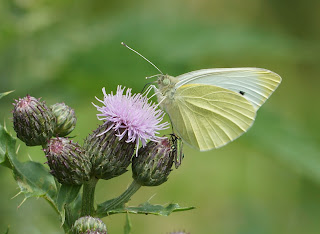Maple Lodge NR had it's first ever Insect Day today as part of National Insect Week 2016 and I gave up my Sunday to help out. It was hardly a chore. I got to spend my day in the outdoors doing what I love doing, watching and photographing nature, with the added bonus of getting to chat to loads of interested people about our glorious insects.
The organisers stationed three of us at different points on the reserve, and guided tours were then led to each three stations as well as a look around the many hides on site. Admission was free, there were refreshments available, moths on view from the previous nights moth trap, plant stall, cake stall, critters from the pond dipping and face painting.
At home I had already collected a hoverfly pupa and some ladybird larvae and pupa, and Martin and Jill collected a load more insects this morning, so we could put them in containers for people to view close up. This, I found, went down a storm with the kids. At my station I had 7-spot and Harlequin Ladybirds, Leaf Beetles, my hoverfly pupa and much more in containers that could be passed around.
My hoverfly pupa (above) will eventually emerge as a Marmalade Fly, Episyrphus balteatus (adult below)....
Where I was stationed there was a large flowering bramble patch, lots of stinging nettles, patches of Red Campion, thistles and long grasses. The whole area was a magnet for bees, hoverflies, butterflies, damselflies and spiders. I was in my element.
I 'hoverated' all day long.....
 |
| Eristalis sp |
 |
| Syrphus sp |
 |
| Syrphus vitripennis |
 |
| Syrphus vitripennis |
 |
| Helophilus pendulus |
and loads and loads of my new favourite, the Great Pied Hoverfly, Volucella pellucens....
Puddingstone Corner where I was stationed, is always a hot spot for damselflies. There were two species giving good views today, Common Blue and Blue-tailed (which I didn't photograph today)....
 |
| Common Blue male |
 |
| Common Blue male close up |
 |
| Common Blue male and female |
 |
| and this Common Blue decided to settle on one of my information sheets |
Just like my patch, Cranford CP, there are beehives on site and there were plenty of Honeybees visiting the bramble bushes....
The brambles were also attracting a lot of bumbles. I even saw my first Tree Bumblebee today but didn't have the camera to hand. Other bumbles seen included Buff-tailed, Common Carder and this rather stunning male White-tailed....
I know spiders are not technically insects but I've allowed them to be in my blog post purely because the two I saw today were heavy with egg sacs.
This is the wonderful Wolf Spider. They are robust and agile hunters with excellent eyesight. They live mostly solitary and hunt alone. Some are opportunistic hunters pouncing upon prey as they find it or even chasing it over short distances. Some will wait for passing prey in or near the mouth of a burrow. There were two around my station today and one of them had already secreted herself inside a fine web....
There were also several wonderfully marked Speckled Bush Crickets on the nettle patches..
The sun and warm weather bought out a few butterflies. I saw two Ringlets that wouldn't settle, and several Green-veined Whites...
and there were abundant numbers of Meadow Browns....
Caterpillars included this Small Tortoiseshell...
and Peacock....
and this beauty is the aptly named Figure Of Eight moth....
An absolutely cracking day. The weather stayed good and it was really great to speak to people who had a genuine interest in the reserve and it's insects. Probably the high-light for me was explaining and showing the differences between 7-spot and Harlequin ladybirds to the kids that attended. The look on the faces as they recognised the subtle differences made my day complete.
So thank you Martin, Keith etc for allowing me to participate. Put my name on the list for next year.



























































